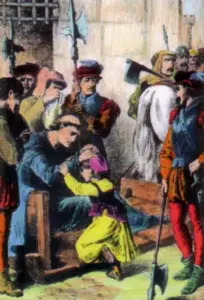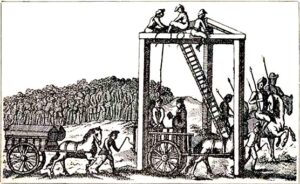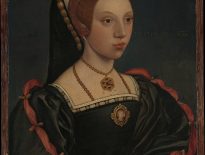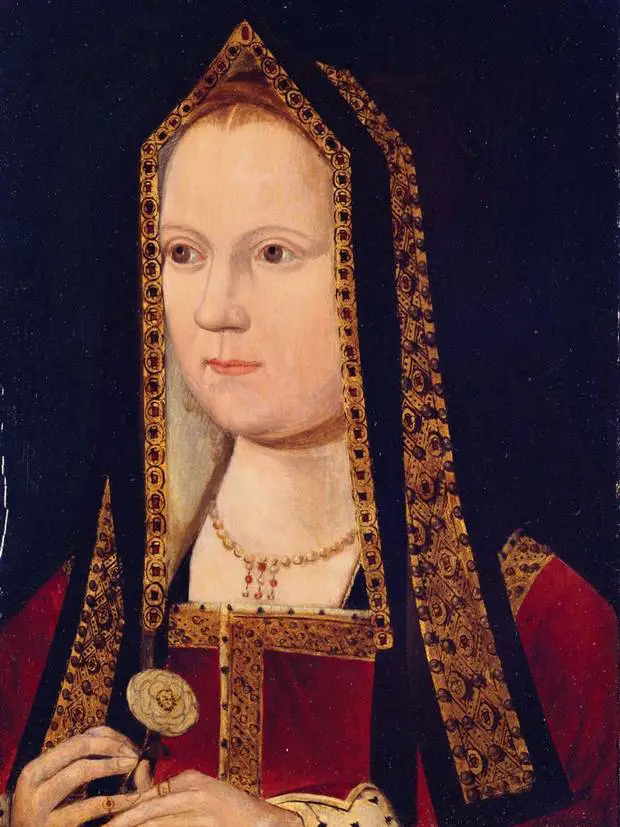James Fenn’s story is one of faith, resilience, and, ultimately, martyrdom. A man who had once been a scholar, a husband, and a father found himself condemned to a traitor’s death, despite his insistence that he was innocent of the charges against him. His final moments, including a heart-wrenching farewell to his little daughter, make this one of the most tragic yet compelling stories of the Elizabethan persecution of Catholics.
So, who was James Fenn, and how did he end up on the scaffold at Tyburn?
Let’s delve into his life, his mission, and the events that led to his execution.
James Fenn was born in Montacute, Somerset, and educated at New College and Corpus Christi College, Oxford. However, his refusal to take the Oath of Supremacy, which recognised Elizabeth I as the supreme head of the Church of England, led to his expulsion.
He spent time tutoring students at Gloucester Hall before returning to Somerset, where he worked as a private tutor. During this period, Fenn married and had two children, but his life changed dramatically when his wife died.
After her death, he took a position as a steward in the household of Nicholas Pointz, a Catholic gentleman. It was there that he met a Catholic priest who encouraged him to take holy orders. Fenn felt a calling, left his secular life behind, and travelled to the English College at Reims and later Douai, where he trained as a priest.
By 1580, he had been ordained and sent back to England on a dangerous mission—to minister to Catholics and bring them back to their faith. This was a perilous task under Elizabeth’s rule, where Catholic priests were considered traitors. Fenn’s ministry didn’t go unnoticed. He was arrested and thrown into Ilchester Gaol, where he was put on public display—chained and fettered—as a warning to others. However, instead of discouraging the crowd, his dignified and pious demeanour actually inspired admiration, leading many to rethink their own beliefs.
Word of this reached Queen Elizabeth I’s council, who ordered him to be sent to London. There, he was interrogated by Sir Francis Walsingham, Elizabeth’s spymaster. He was then imprisoned at the Marshalsea for two years.
At first, authorities didn’t know that Fenn was a priest, and so allowed him visitors. But rather than being broken by imprisonment, he used this opportunity to minister to Catholics and even convert Protestants. He also urged criminals to repent, showing his dedication to his faith even in captivity. Eventually, however, his secret was discovered, and he was interrogated about his loyalty to the queen and the Catholic faith. Fenn made it clear that he would never harm Elizabeth I, that he wasn’t a traitor, and that he was willing to die for his beliefs.
Despite his words, he was accused of conspiring with fellow priest George Haydock in Rome to return to England and assassinate the queen. Fenn vehemently denied the charge, pointing out that he was actually imprisoned in the Marshalsea at the time the conspiracy was alleged to have taken place. But the court was not interested in the truth. The judge dismissed his alibi, instructing the jury to find him guilty of treason, and they did. His fate was sealed.
Fenn was transferred to the Tower of London, where he was kept in irons until the day of his execution. Even at this late stage, his former schoolmate, Mr. Popham, the attorney general, tried to persuade him to renounce his faith in an effort to save his life. But Fenn refused. He was ready to die.
On 12th February 1584, he was drawn on a hurdle to Tyburn, where a large crowd had gathered. Among them was his young daughter, Frances, who wept as she said her final goodbye to her father. Fenn looked upon her with a calm and serene countenance, gave her his blessing, and then turned to meet his fate. At the scaffold, he prayed and once again declared his innocence, before recommending “himself and the queen, to whom he wished all manner of happiness, to God's mercy.” Then came the brutal execution. He was hanged, cut down while still alive, disembowelled and quartered.His head was placed on London Bridge, while his body was divided and displayed on four of the city’s gates.
James Fenn was just one of five Catholic priests executed that day, along with George Haydock, Thomas Hemerford, John Nutter, and John Mundyn.
In 1929, James Fenn was beatified by Pope Pius XI, officially recognising him as a martyr of the Catholic Church.





Leave a Reply